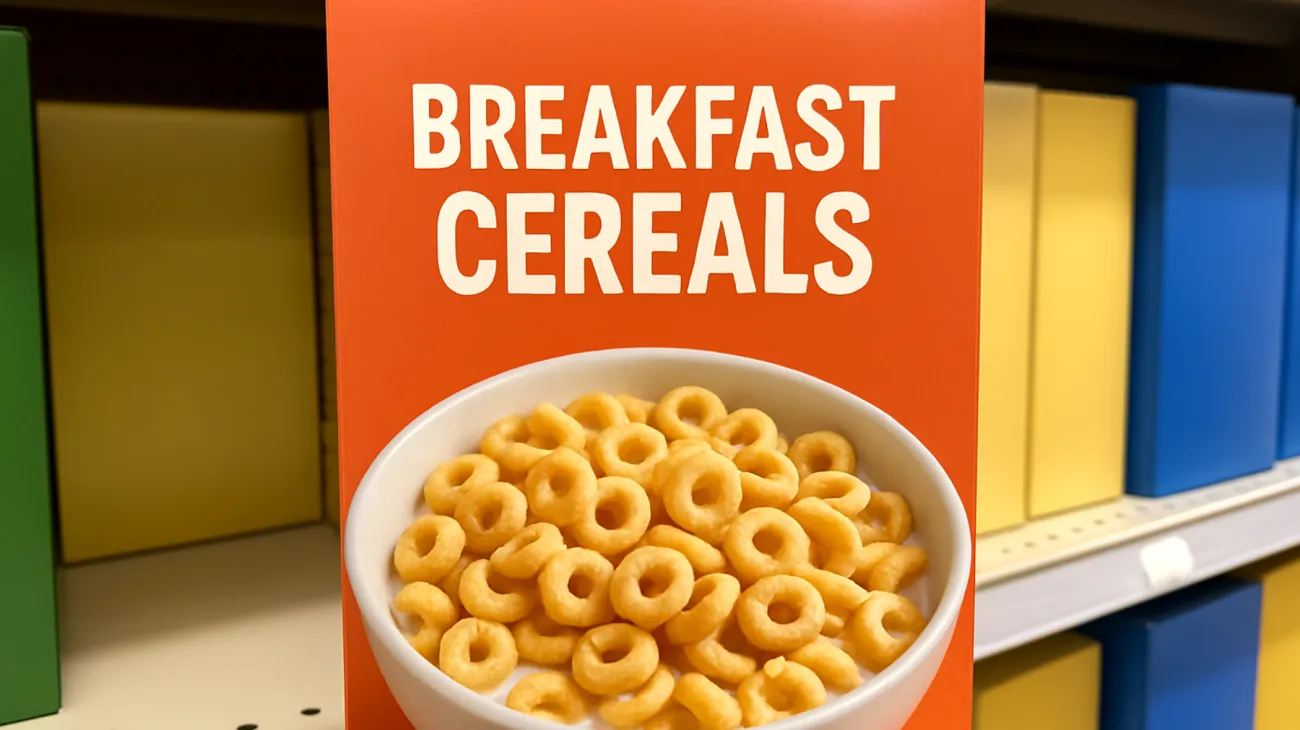Walking down the cereal aisle in any UAE supermarket, you’ll encounter a dazzling array of colorful boxes adorned with claims aimed at health-conscious parents. However, beneath these marketing messages lies a sophisticated use of tactics that often make sugar-laden breakfast cereals appear far healthier than their nutritional content warrants. Understanding these practices is critical for making informed food choices and protecting your family’s health and budget.
The Psychology Behind Cereal Marketing
Food manufacturers invest substantially in psychological research to understand consumer behavior and optimize product appeal. These companies have mastered the art of balancing health messaging with sensory cues that target pleasure and convenience. By highlighting fiber, vitamins, or minerals while simultaneously appealing to our taste for sweetness through flavors and colors, they create products that feel healthy but often have nutritional profiles similar to sweet snacks.
Breakfast holds special significance as a meal where parents want to provide optimal nutrition for their children. This makes adults particularly receptive to promises of health benefits. Marketers exploit this vulnerability by crafting packaging and advertising that speak directly to parental aspirations and anxieties regarding child nutrition, creating an emotional connection that often overrides rational nutritional assessment.
Common Health-Washing Tactics to Recognize
The Vitamin Fortification Illusion
Adding vitamins and minerals to sugary cereals has become a widespread marketing approach. Packages prominently promote “12 essential vitamins and minerals” or claim to be an “excellent source of iron and B vitamins,” even when the underlying cereal contains sugar levels comparable to candy. This practice creates what nutritionists call a “health halo” effect, misleading consumers about the overall nutritional value of products high in sugar or refined grains.
While cereals are legally permitted to add synthetic vitamins and minerals, and these nutrients are generally bioavailable, they cannot counteract the negative effects associated with excess added sugars. High sugar consumption links directly to increased risk of obesity, diabetes, and dental problems. The critical point remains that vitamin fortification claims do not compensate for high sugar and low fiber content in these products.
Whole Grain Manipulation
The phrase “made with whole grains” appears on countless cereal boxes, yet regulations in many countries, including the UAE, don’t require companies to specify the quantity of whole grains used. This allows products with minimal whole grain content to highlight this claim prominently. Genuine whole grain products should list a whole grain ingredient first in the ingredients panel—such as whole wheat or whole oats. When whole grains appear third or lower on the list, the content and associated nutritional benefits become negligible despite the front-panel marketing.
This manipulation becomes particularly problematic when shoppers assume that any mention of whole grains indicates a substantially healthier product, potentially overlooking the predominance of refined flour and added sugars that often make up the bulk of the cereal.
Natural and Organic Misdirection
Claims such as “natural flavors,” “naturally sweetened,” or “organic” contribute significantly to perceptions of healthfulness, even when products remain high in sugar. Research demonstrates that organic and natural sweeteners—including cane sugar, honey, or fruit juice concentrates—impact blood glucose in a manner similar to refined sugars. Organic certification simply means ingredients are grown without synthetic pesticides, not that the product is low in sugar or processed carbohydrates.
These marketing strategies effectively mislead shoppers into believing they’re making substantially healthier choices, when the metabolic impact of consuming these products differs little from conventional sugary cereals.

Decoding the Nutrition Facts Panel
Your best defense against misleading cereal marketing lies in understanding how to interpret the nutrition facts panel and ingredients list effectively. Sugar content deserves primary attention—many popular cereals contain 12 to 15 grams per serving, equivalent to 3 to 4 teaspoons. The World Health Organization recommends limiting free sugar intake to less than 25 grams daily for adults, with even stricter limits for children.
Serving sizes present another area of potential manipulation. Manufacturers often use unrealistically small serving sizes, sometimes just 30 grams, to make sugar and calorie content appear reasonable. Research shows that typical portions consumed are much larger, meaning actual sugar intake often doubles or triples the listed amounts.
Smart Shopping Strategies
Developing resistance to cereal marketing requires systematic evaluation approaches. Start by examining the nutrition facts panel before looking at any front-of-package claims. This prevents marketing messages from influencing your interpretation of the actual nutritional content.
Look for cereals containing less than 6 grams of sugar per serving and at least 3 grams of fiber. The ingredient list should be short and feature recognizable components. A practical benchmark involves ensuring protein content exceeds sugar content—this simple rule eliminates most heavily marketed children’s cereals while identifying genuinely nutritious options.
Red Flags in Ingredient Lists
Ingredients appear by weight in descending order, making the first three ingredients the most significant contributors to the product’s composition. Healthy cereals should list a whole grain as the first ingredient, with minimal presence of added sweeteners.
Added sweeteners hide under numerous names and manufacturers often use multiple sugar sources in combination, distributing sugar content throughout the ingredient list to make each individual sweetener appear less significant while collectively contributing substantial sweetness to the product. Keep an eye out for these common disguises:
- Corn syrup, high fructose corn syrup, and rice syrup
- Dextrose, fructose, and sucrose variations
- Malt extract, barley malt, and brown rice syrup
- Fruit juice concentrates and dried fruit powders
Building Better Breakfast Habits
The most effective protection against cereal marketing manipulation involves expanding breakfast options beyond boxed cereals. Health organizations consistently recommend minimally processed breakfasts: eggs, whole grain toast, fresh fruits, nuts, and plain yogurt deliver superior nutrition compared to most sweetened boxed cereals.
When packaged cereals remain part of your breakfast routine, treat them as occasional conveniences rather than daily nutritional foundations. This shift in perspective reduces both the negative impact of sugar intake and the influence of misleading health claims on your food choices. Consider nutritional value relative to cost rather than just price per box—plain oats and whole grain cereals without added sugars typically provide superior nutrition at lower cost than branded alternatives.
Your awareness of these marketing tactics represents the first step toward making genuinely informed food choices. By understanding how cereal manufacturers exploit health aspirations through sophisticated marketing techniques, UAE consumers can navigate supermarket aisles with confidence, selecting breakfast options that truly support their families’ wellbeing rather than falling prey to carefully crafted illusions of healthfulness.
Table of Contents

